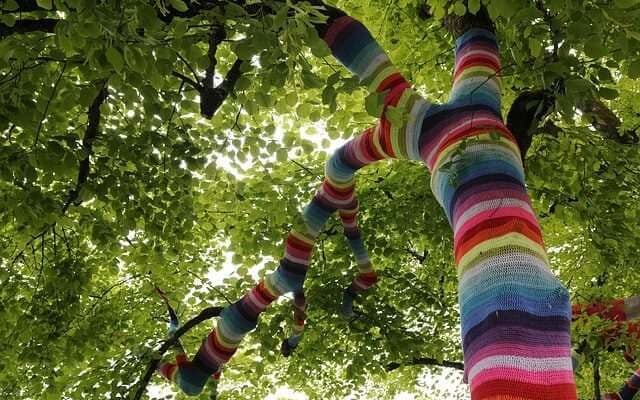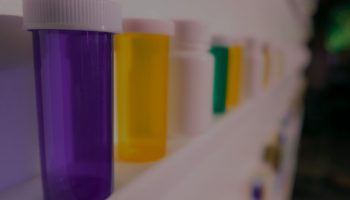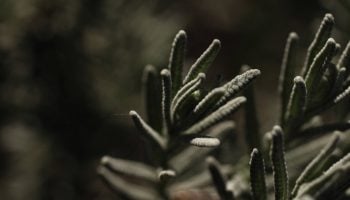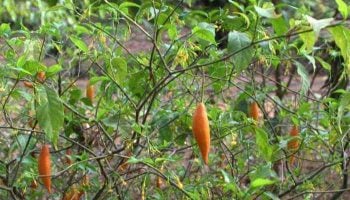It’s no secret that the tropical jungles of both South America and Africa are home to thousands of therapeutic plant species, including multiple psychoactive species. For instance, the plant family Apocynaceae, also known as dogbane, has more than 4,600 known plant species in these tropical areas. Within this massive family, there are three closely related species, all in the physical form of small trees or shrubs, that hold the psychoactive properties of the indole alkaloid ibogaine. These species are Tabernanthe iboga, Voacanga africana, and Tabernaemontana undulata.
The Iboga Plant Composition and Drug Contents
Tabernanthe iboga, or the iboga plant, is a small shrub distributed throughout the lowland tropical forests of the Congo Basin. The plant contains most of its alkaloids in its root bark, with 80% of its alkaloid composition being ibogaine.
Voacanga Africana is also native to tropical areas throughout Africa. Voacanga Africana contains a very small percentage of ibogaine, but also contains voacangine and voacamine, which are alkaloids holding very similar psychoactive properties as ibogaine. In this plant species, the alkaloids are found predominantly in the seeds and root bark.
Tabernaemontana undulata, also known as “Becchete” or “Sananga”, is a milkweed species that grows in the Amazon Rainforest. It is very similar to Tabernanthe iboga and contains the ibogaine alkaloid in its root bark.
Traditional Use and Concentrations
All these ibogaine-containing plants appear to have different properties, and have been adopted in different manners by several cultures.
Tabernanthe Iboga
In the preparation of Tabernanthe iboga, the user scrapes the bark from the root and then dries it as a powder where it can be swallowed or brewed into a tea. Dosing the iboga plant is entirely up to the user, and dependent on the kind of iboga experience they are seeking. In low doses, T. Iboga is used as a stimulant to help sustain energy levels. At higher doses it becomes a strong hallucinogen and can be used therapeutically for treating addiction. The dose for therapeutic use is usually around 5-8 milligrams per kilogram of bodyweight. It is reported to be better to take multiple small doses spaced an hour apart to acclimate the body to the strength of the medicine.
The psychoactivity of the iboga plant was first discovered by the Pygmy tribe of Central Africa. It was then passed on to Bwiti practicing tribes in Gabon and Cameroon. Traditional healers of the Mitsogo Bwiti spiritual tradition used Tabernanthe iboga as a tool to communicate with ancestors and spirits. All of the tribe would consume the iboga plant in small doses for the stimulant effect and for various medical ailments such as fever, stomachache, liver disorders, impotency, mental illness, and addiction. Only the aspiring healer, or “Ndzi eboka” (eater of iboga), would take large hallucinogenic doses. This would induce them into a “waking dream” in which the initiate is contacted by ancestors and gain firsthand experience of Bwiti.
Voacanga Africana
Due to the fact that the Voacanga africana seeds have a higher percentage of these alkaloids, they are traditionally used for hallucinogenic experiences and spiritual ceremonies. The Voacanga africana root bark holds a lower dose, and therefore only causes the effects of stimulation – not hallucination – lasting several hours. Voacanga africana root bark dosage is around 10-15 grams of root bark or powder, which can be brewed as a tea or ingested. The Voacanga africana seeds can be chewed or swallowed and an average dose ranges from eight to fifty seeds depending on intended strength of trip.
Voacanga africana medicinal uses range from stimulant to aphrodisiac to psychedelic, and it can even be used as a poison. Voacanga plants have been used in the treatment of leprosy, diarrhea, and convulsions in children. Indigenous tribes in Africa used smaller doses of the root bark for hunting, as it gave them greater energy and focus.
Tabernaemontana undulata
There is little research or current dosing recommendations for this specific plant, but traditionally it was used in Brazilian and Peruvian indigenous tribes. The Matis tribe, an active indigenous group in western Brazil, prepare the Tabernaemontana undulata root bark into a liquid and administer into the eye to give the environment “deeper texture and dimension” and to help them spot animals while hunting. These effects are reported to last a lengthy “days or weeks.” Like any low dose of ibogaine-containing plants, it also acts as a stimulant. The Matses tribe, another Amazonian tribe, used the plant in a similar method, but would also ingest a stronger dose orally to receive more of the hallucinogenic “visions.”
Modern Treatment and Therapy using the Iboga Plant
In current Western medicine, there has been research on and off since the early 1900s on ibogaine. In 1901, two scientists Dybowsky and Landrin successfully isolated a crystallized alkaloid from the Tabernanthe iboga plant, naming it ibogaine. They researched it as a stimulant and it was recommended for specific central nervous system disorders. Research stagnated until the 1930s when Raymond-Hamet, a French botanist, began his twenty-two year study of the drug. Contemporaneously, France began selling the pharmaceutical drug, Lamberene, which contained about 8 milligrams of ibogaine, and was sold as a stimulant for fatigue. By 1966, the drug was discontinued and then banned.
The present wave of interest in the psychoactive effects of ibogaine, and its resident plants Tabernanthe iboga, Voacanga africana, and Tabernaemontana undulata, has been predominantly focused on its therapeutic uses for addiction treatment and psychotherapy. People with substance abuse problems have found that larger doses of ibogaine, in a therapeutic environment, can significantly reduce withdrawal from opiates and temporarily eliminate substance-related cravings. Currently there are somewhere between 75 and 100 therapeutic ibogaine clinics worldwide. MAPS, the Multidisciplinary Association for Psychedelic Studies, has completed two observational studies of the long-term effects of ibogaine treatment for opioid dependence disorders in both Mexico and New Zealand. These studies are contributing to the growing literature about ibogaine as a treatment for drug addiction. The current research is very promising, and these plants are increasingly being recognized as medicines that hold great potential.
To find legal iboga retreat centers for addiction or personal growth, check out Third Wave’s vetted directory of providers worldwide.
Sources:
1) Brown, T. K., & Alper, K. (2017). Treatment of opioid use disorder with ibogaine: Detoxification and drug use outcomes. The American Journal of Drug and Alcohol Abuse, 44(1), 24-36. doi:10.1080/00952990.2017.1320802. Retrieved from: https://tandfonline.com/doi/full/10.1080/00952990.2017.1320802#
2) Noller, G. E., Frampton, C. M., & Yazar-Klosinski, B. (2017). Ibogaine treatment outcomes for opioid dependence from a twelve-month follow-up observational study. The American Journal of Drug and Alcohol Abuse, 44(1), 37-46. doi:10.1080/00952990.2017.1310218. Retrieved from: https://www.tandfonline.com/doi/full/10.1080/00952990.2017.1310218#
3) Ibogaine therapy referral center link: http://www.ibogainereferralnetwork.com/







I wish to further my healing potential for myself and All my brother’s and sisters in which plant medicine is the right choice. Blending this with energy healing, diet, breath work, and meditation seems like the future for me….
Thank you for sharing Josh 🙏 We agree that skilled psychedelic use combined with integrated wellness strategies is a beautiful approach to healing and transformation.